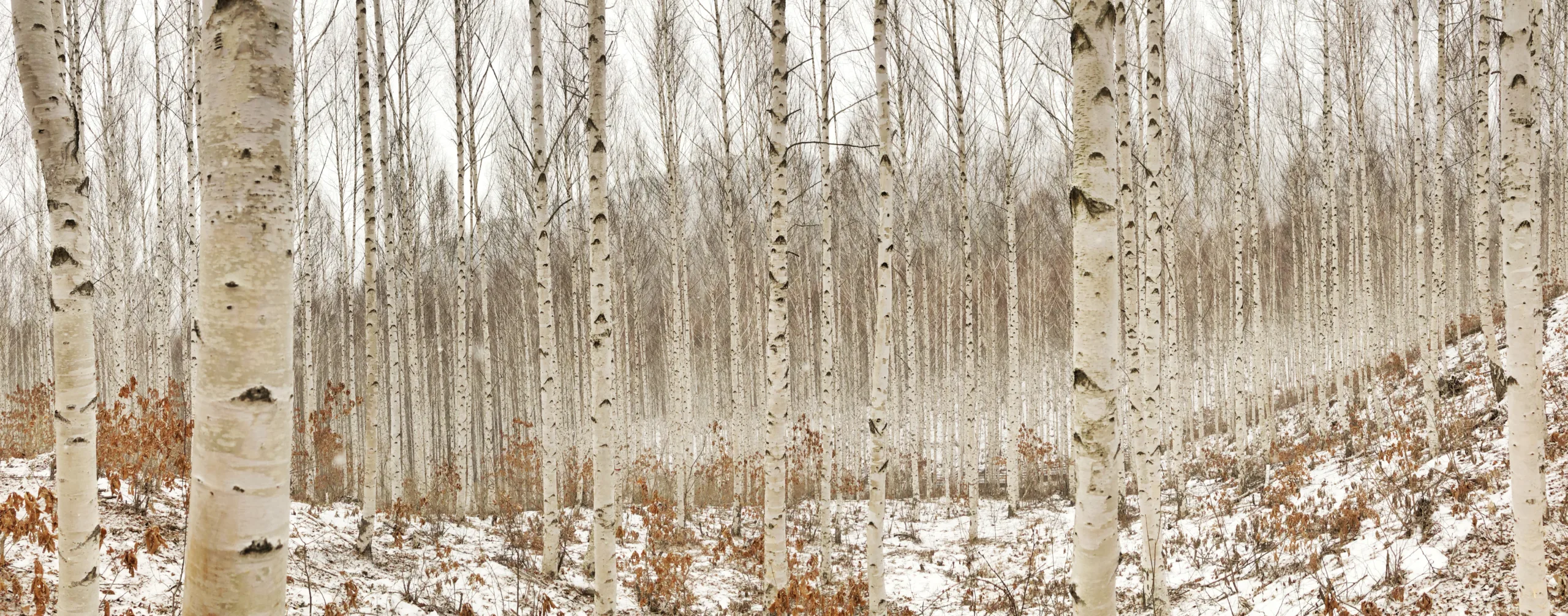Tired of seeing the same trees in your garden? Are you looking for a way to introduce a unique, hardy tree to your landscape? Look no further than birch trees! But can you propagate birch trees? The answer is yes, and it is surprisingly easy. In this article, we will discuss the various methods of propagating birch trees and explain why it is a great tree for any garden.
The propagation of birch trees can provide a variety of benefits, including providing habitat for birds and other wildlife, creating natural windbreaks and privacy screens, stabilizing soil on eroding hillsides and slopes, and providing an attractive landscape feature. Propagating birch trees can also help to reduce air pollution by absorbing carbon dioxide and releasing oxygen. Additionally, propagating birch trees can help to conserve water by reducing water runoff during storms.
Advantages of Growing Birch Trees from Cuttings
Growing birch trees from cuttings can be a great way to add greenery to your landscape without having to buy seedlings or saplings. There are many advantages to this method of propagation. One of the most obvious is that it costs very little and is relatively easy to do. The cuttings can be taken from existing trees and transplanted with minimal effort, giving you a new tree in no time at all.
Another advantage is that it’s much faster than growing a tree from seed, which can take several years before reaching maturity. With cuttings, you get an instant tree that will start producing leaves and fruits within a few months of planting. This means you get the benefit of having a lush and vibrant garden much faster than if you had planted seeds.
Cuttings also have a higher success rate than seeds, as they are already established plants that have proven themselves in their environment. This means there is less chance of them failing due to unfavourable conditions or diseases. Additionally, since the cuttings come from existing trees, they often contain more nutrients than seedlings as they have already been established in their environment for some time.
Finally, by growing birch trees from cuttings instead of buying them, you can help preserve the local biodiversity in your area by helping maintain the genetic diversity of native species. This will help ensure that the unique genetic makeup of these species is preserved for generations to come.
Propagating Birch Trees
Birch trees are an attractive addition to any landscape. If you’re looking to propagate birch trees, there are a few steps you can follow to ensure success. First, it’s important to choose the right type of birch tree for your climate. Some varieties of birch can tolerate colder temperatures, while others will only thrive in warmer climates. Once you’ve chosen the right type of birch, you’ll need to collect some seedlings or cuttings. These can be taken from existing trees or purchased from a nursery.
Once your seedlings or cuttings have been obtained, you’ll need to prepare them for planting. Begin by soaking them in water for several hours so they’re hydrated before planting. Next, dig a hole that is twice as wide as the root ball and just as deep as the root ball itself. Place the roots into the hole and fill in with soil. Water well and keep moist until established.
It is also important to prune your birch trees regularly to encourage healthy growth and prevent disease from spreading throughout the tree. When pruning, be sure not to remove too much foliage as this can weaken the tree and cause it stress. Pruning should always be done with clean shears or clippers that are sharp enough for a nice clean cut.
Finally, if you want your birch trees to thrive, it’s essential that they receive enough sunlight each day. Choose a spot in your yard with full sun exposure and make sure that it is kept free of competing plants or foliage that could block out much-needed sunlight for your tree’s growth and development. With a bit of care and attention, these steps will help ensure successful propagation of birch trees in any landscape!
Understanding the Soil Requirements for Birch Trees
Birch trees are some of the most attractive ornamental trees that can be planted in a garden. They have an upright, conical shape and their distinctive bark adds visual interest to the landscape. In order for birch trees to thrive and reach their full potential, they require a specific type of soil.
The ideal soil for birch trees is slightly acidic with a pH between 4.5 and 6.5. The soil should be moist but well-drained so it does not become waterlogged or flooded. A sandy loam or loamy sand is best for birch tree growth, as it provides plenty of air pockets and drainage channels for excess water to escape from the root zone.
Birch trees are also heavy feeders and require a steady supply of nutrients to stay healthy and vigorous. Inorganic fertilizers such as ammonium nitrate, potassium sulfate, or urea should be applied in spring before new growth begins and again after flowering has occurred in mid-summer. Organic fertilizers such as compost, manure, or bone meal can also be used to provide additional nutrients to the soil throughout the year.
Finally, it is important to prune birch trees regularly in order to maintain their form and remove any dead wood that may have accumulated over time. Pruning should be done carefully so as not to damage any of the live branches that make up the tree’s structure and shape. When pruning is done properly, birch trees will remain attractive for many years with minimal effort on the part of the gardener or homeowner.Propagating Birch Trees
Identifying the Right Time to Propagate Birch Trees
Propagating birch trees is a great way to create a beautiful and lush landscape. However, it is important to identify the right time to propagate these trees in order to ensure their successful growth and establishment. The best time to propagate birch trees is in late summer or early fall when the temperatures are mild and the soil is still warm enough for root development.
Before propagating, it is important to prepare the soil properly. This involves adding compost or fertilizer, as well as ensuring that the soil is well-drained and has adequate drainage. It is also important to prepare a planting bed by digging a hole that is slightly larger than the root ball of the tree. This will help ensure that the roots are able to spread out without becoming too crowded or restricted.
Once the soil has been prepared and the planting bed has been dug, it’s time to propagate the birch tree. The easiest method of propagation is by using cuttings from an existing birch tree. To do this, cut off several healthy stems from an existing tree that are about six inches long and remove any leaves from them. Place them in a bucket of water until they have rooted, which can take up to four weeks depending on temperature and moisture levels in the air.
Once rooted, carefully transplant them into prepared planting beds filled with moist soil that has been enriched with compost or fertilizer. Water regularly for several weeks until established before allowing them to dry out completely between waterings. Once established, continue regular care which includes mulching around their base and pruning back any dead wood or branches at least once per year.
By following these steps and propagating at the right time of year, you can successfully establish a beautiful birch tree in your garden or landscape that will provide years of enjoyment for you and your family!

Location Considerations When Planting Birch Trees
When planting birch trees, it is important to consider the location in which they will be planted. The tree should be placed in an area that receives plenty of sunlight and is not overly shaded by other trees or structures. It is also important to make sure that the soil is well-drained, as birch trees do not tolerate wet conditions. When planting in a very wet area, it may be necessary to add drainage or use raised beds to ensure that the tree does not become waterlogged. Additionally, birch trees should be planted at least 15 feet away from buildings and other structures to ensure that they have enough space to grow freely and healthily. Finally, when planting multiple birch trees, it is important to ensure that they are spaced properly so that their roots do not become tangled as they mature.
By taking these factors into consideration when planting birch trees, you can ensure that your tree has the best chance of survival and growth. With proper care and attention, your birch tree will provide years of enjoyment with its beautiful foliage and striking white bark.
Learning How to Collect and Store Cuttings for Propagation
Collecting cuttings is an important part of propagating plants. Cuttings are pieces of stems, leaves or roots taken from existing plants. When properly collected and stored, these cuttings can be used to produce new plants. Knowing how to collect and store cuttings for propagation is essential for successful plant propagation.
When collecting cuttings, it is important to select the right plant material. The best type of cutting material will be healthy and disease-free. It should have no visible signs of damage or decay. The ideal cutting should also have a good amount of foliage or stems attached to it for maximum success in propagation.
Once the right cutting material has been selected, it’s time to collect the cuttings and store them properly. The best way to do this is to use a sterile scalpel or pruning shears when taking the cuttings from the parent plant. This ensures that no bacteria or fungi will be transferred onto the cutting material during collection. After collection, it is important to store the cuttings in a cool and dry place until they are ready for propagation.
Lastly, it is important to keep the collected cuttings moist until they are ready for use in propagation. This can be done by wrapping them in damp paper towels or storing them in damp sphagnum moss inside sealed plastic bags. Keeping them moist will help ensure that they remain healthy until they are ready to be propagated.
By following these simple steps when collecting and storing cuttings for propagation, you can ensure that your new plants are healthy and strong when they are grown from these cuttings. Learning how to collect and store cuttings for propagation correctly is an essential skill for any gardener or plant enthusiast looking to propagate their own plants successfully!

My interest in trees started when I first saw the giant sequoias in Yosemite.
I was a teenager then, and I remember thinking, “I need to learn more about this.”
That moment stuck with me.
A few years later, I went on to study forestry at Michigan Tech.
Since graduating, I’ve worked in a mix of hands-on tree care and community education.
I’ve spent over ten years helping people understand how to plant, maintain, and protect the trees in their neighborhoods.
I don’t see trees as just part of the landscape.
They are living things that make a real difference in our daily lives.
